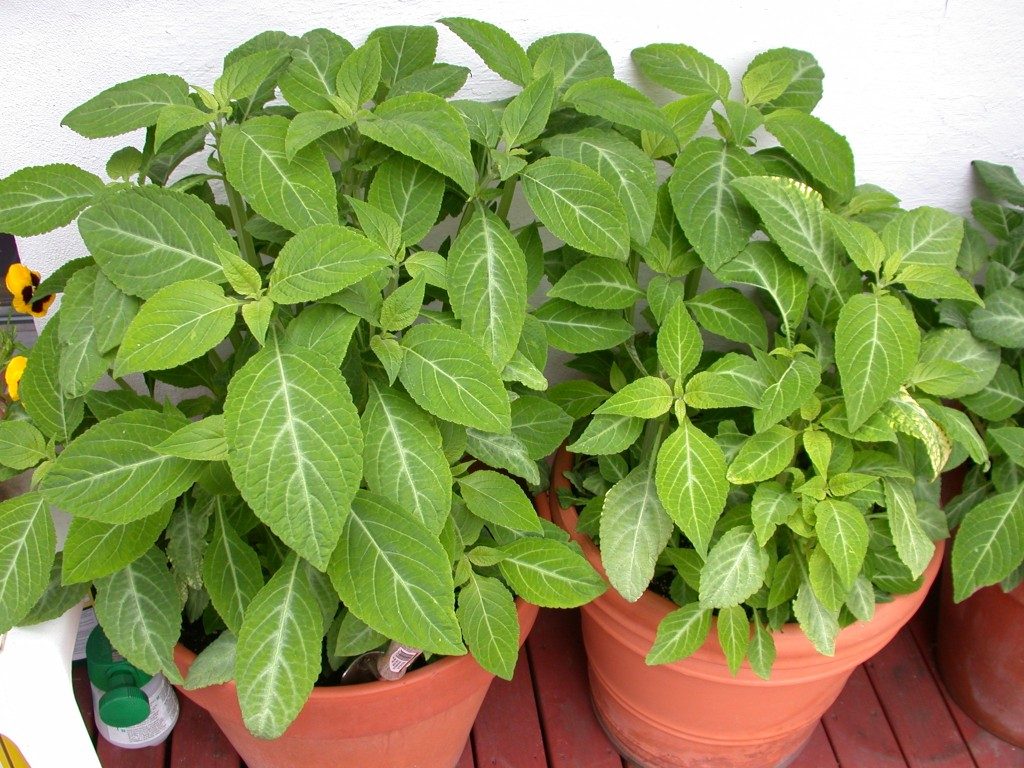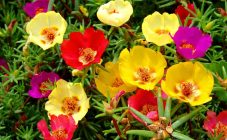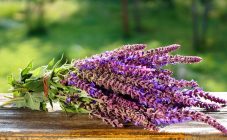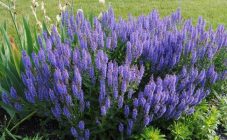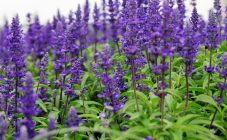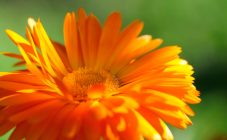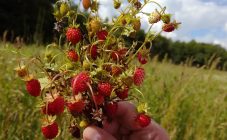The sage of diviners (Salvia divinorum) is a member of the labiate family. It is a rare plant with a natural range in Mexico. Here salvia divinorum is used by local shamans for mystical rites.
Discovery history
The first mention of the fortune teller's sage dates back to 1939. Then it was described by the Swedish anthropologist J.B Johnson. In 1962, another scientist - ethnobotanist R. Gordon Wasson - went on an expedition, from where he brought samples. Local residents hid the unusual plant from Europeans, so the world learned about it only in the twentieth century.
How exactly the diviner sage was cultivated is difficult to say, because only a small tribe of Indians raised it. Shamans went into a trance with his help. They chewed the leaves, after which the gift of clairvoyance was revealed to them, they could give accurate predictions. Some of them prepared special drinks that made it possible to guess the course of events and diagnose diseases. Because of this, sage received a different name - soothsayers.
Description of the plant
Sage sage is a close relative of the common sage officinalis. These plants have characteristic external features. However, the Mexican culture is larger - under favorable conditions it can grow up to 2.5 m.
Predictor Sage Description:
- small shrub with a developed woody root system;
- stems are tetrahedral, straight, branched;
- short leafy shoots at the base;
- leaves are oblong, serrated, grow up to 20 cm long;
- flowers are tubular, large;
- the fruit is a simple two-seed;
- seeds are spherical, brown or black-brown in color.
The sage of diviners has a hallucinogenic effect on the body. When used, the perception of reality is distorted.
Salvia has a short-term effect - toxic substances quickly break down in the body into passive compounds. The duration depends on the dosage and method of use - the leaves are smoked, chewed or made into tinctures. On average, clouding of consciousness lasts 20 minutes.
The harm of salvia divinorum lies in the negative effect on the brain - opioid receptors are destroyed. In the presence of chronic diseases, an exacerbation occurs. The likelihood of schizophrenia in people with a predisposition to it increases threefold. Because of smoking, the respiratory system suffers - the risk of developing lung cancer increases. Other negative consequences also come - a lingering cough, bronchitis, pneumonia.
The sage of fortunetellers is not only harmful to internal organs. Its use is often fatal - "under salvia" a person does not control himself. He is unable to objectively perceive reality. There are cases when people fell out of windows and threw themselves under cars. Because of this, the sage of diviners is taken one at a time, so that someone in a sober mind can stop the other in time. If a person behaves violently, he is locked in a safe place.
Growing features
Fortunetellers sage is very thermophilic and picky about the soil. It does not tolerate shading and even light frost. However, in heated greenhouses, it can be cultivated almost everywhere. With an excess of organic fertilizers and moisture, it develops rapidly.
The plant reproduces mainly vegetatively. Seeds are scarce, and attempts to grow diviner sage this way usually fail. Roots are formed on cuttings immersed in water or a nutrient substrate after 2-3 weeks. During this time they are kept in the shade and covered with glass or film.
Young seedlings are moved into the ground and fed.
Maintenance measures are standard - weed removal, loosening, regular watering. Mineral and organic fertilizers are systematically applied. Growth stimulants can be used.
Salvia is not susceptible to disease. It can be affected by pests:
- mites - settle on the leaves, gradually weaken the plant. To combat, the drugs Akarin, Agravertin, Borneo, Kleschevit are used;
- aphid - densely sticks to shoots and flowers. Such formulations as Aktelli, Agrovertin, Fitoverm are effective;
- thrips are small beetles that suck out cell sap. Agravertin, Karate, Fitoverm, Aktellik are used against them.
However, the cultivation of fortune tellers' sage at their summer cottages is prohibited by Russian law. Better to pay attention to other plant varieties. There are several decorative types that can decorate a flower garden:
- Sage brilliant - has large spike-shaped inflorescences of orange, red, burgundy, purple, pink and white.
- Sage Ethiopian - white flowers effectively complement the planting against the background of stones.
- Mealy sage is a compact plant with long spikelets of blue color.
Another member of the family is medicinal sage. It is used for the preparation of traditional medicine. The infusion of the leaves has an astringent effect, relieves inflammation and disinfects. Healers use the plant as a diuretic and carminative. It is included in a variety of medicinal fees. Also, the culture is added to food as a spice.
Predictor sage cannot be cultivated in the Russian Federation. Therefore, it is inappropriate to compare it with other plant varieties. Perhaps it will be used in medicine if the composition is studied in more detail. While it poses a danger to people who are in search of thrills.


